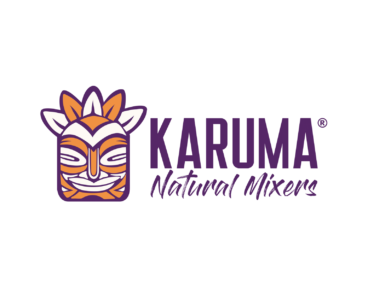Whoa! I’ve been fiddling with bitcoin wallets since the early days, and lemme tell you—things got messy fast. My first wallet was clunky and paranoid; it asked for a 24-word phrase like it was a secret handshake. Really? People copied that phrase into notes apps and lost millions. Here’s the thing. Mobile still wins for daily use, though, because it’s the one you actually carry everywhere.
Okay, so check this out—mobile wallets are a tradeoff between convenience and control. Most casual users want something quick and reliable. Power users want custody and advanced features. On one hand, custodial apps make onboarding shockingly easy, which is great for new adopters. On the other hand, though actually, custody means trusting someone else with your keys, and that thought makes my skin crawl.
I’ll be honest: I’m biased toward non-custodial solutions. Initially I thought custodial services were fine for small amounts, but then I realized that even small mistakes compound over time when fees or limits bite you. Something felt off about treating long-term savings like a checking account. Hmm… I still use custodial services for trading and non-custodial wallets for savings. There’s a middle ground if you want it, and yes, hardware wallets pair well with mobile apps when you care about security.
Here’s what bugs me about many wallet reviews. They list features, then stop. They rarely say how those features feel in real use. The UI might be pretty, but navigation can be maddening when you need to broadcast a transaction fast. (oh, and by the way…) Speed matters. Slow confirmations or confusing fee sliders make people overpay or delay transactions, and that becomes a habit.
Wallet security isn’t mysterious. Short version: seed phrases, private keys, backups, and device security. Short. Write your seed down. Medium sentence to explain why you should store it offline. Long sentence coming—if you type your seed into cloud backups, screenshots, or any online place, you are creating a single point of failure that can be exploited later when passwords leak, platforms get compromised, or someone gets access to your phone; in other words, a clever thief only needs one lapse to ruin your day.

Practical categories: which mobile wallet fits you
Whoa! Custodial wallets are simple. They look like banking apps. Most let you buy crypto with a card in minutes. They also store your keys, so recovery is easier if you forget passwords. But you trade control for convenience.
Non-custodial wallets give you the keys. You control the seed. You pay the responsibility. If you screw up, nobody to call. This matters more the larger your holdings. Initially I recommended beginners start custodial, but now I tell them to try a non-custodial wallet early, even for tiny amounts, so they learn before it matters.
Hybrid wallets try to be smart. They use a custody model with on-chain control options or integrate hardware signers. They can be clunky, though, and integration quality varies. I’m not 100% sure every hybrid is worth the hype yet, but they sometimes strike a good balance for intermediate users with somethin’ to protect. Really, it’s personal.
Mobile-first wallets focus on UX and speed. They often include coin swaps, tokens, and DeFi access. These are fun and useful for active users. They can be risky if they request many permissions. My instinct said: check permissions and privacy policies first, because apps asking for everything usually do too much.
Okay, so about fees and transaction management—short sentence. Fees vary wildly by network and wallet. Many wallets offer fee presets; others let you set custom sats-per-byte. Long sentence: if you’re doing many small payments, fees will eat you alive unless you optimize transactions, consolidate inputs when fees are low, and use batching strategies where possible, which some mobile wallets support but not all, and that difference becomes very very important over months of active use.
Wallet interoperability is underrated. Short. Some wallets export into many formats. Some lock you in. Use wallets that support standard recovery phrases (BIP39/BIP44/SLIP-0010) unless you want vendor lock-in. Medium—this helps you move funds between apps and to hardware devices. Long—if you plan to scale your crypto use, choose wallets that play well with others so you can upgrade your security without migrating through a dozen confusing steps later on.
Security layers you should look for: biometric unlock, PIN, passphrase (25th word), multi-sig support, and hardware wallet pairing. Short. Not all wallets have every layer. Medium—multi-sig is a game-changer for serious safeguarding, though annoying to set up. Long—pairing mobile apps with a hardware key like a Ledger or using a multi-signature scheme splits trust and significantly reduces single-device risk, which is crucial if you are holding amounts you can’t mentally shrug off.
Now a fast checklist for trying a mobile wallet. Short. Create a wallet with a tiny amount first. Read the seed backup flow. Check for open-source code if you care about transparency. Try a send and receive to gauge speed and fees. Long—if the app lacks basic UX cues like clear fee previews, transaction history labels, and simple backup reminders, you’ll likely run into avoidable mistakes when convenience is most important.
When to move to a hardware wallet—short answer: sooner than you think. If you hold crypto equal to a nice used car, treat it like that. Medium—hardware wallets add friction but protect against phone malware. Long—pairing a hardware signer with a mobile interface gives you a practical operational setup where daily payments can remain convenient while the signing authority is kept offline, and that’s the setup I personally settled on after a few bad nights worrying about my keys.
I’ll be honest—I don’t love every “review site” out there. Many reviews focus on features, not flaws. Some publishers accept money and blur lines. If you’re looking for more curated, comparative takes and user guides, I often point readers to external hands-on lists for follow-up. Check a solid resource like crypto wallets review for more side-by-side details and real screenshots to compare with what I’m describing.
FAQ
Which mobile wallet is best for beginners?
Short: a well-known custodial wallet makes onboarding easy. Medium: pick one that supports simple buys, good customer support, and clear recovery options. Long: but if you can, open a non-custodial wallet in parallel and practice small transfers so you learn seed handling early, because that knowledge pays off later when you want full control.
How should I back up my seed phrase?
Write it on paper and store it in at least two secure places. Short sentence to stress it. Consider a hardware backup like a steel plate if you plan to hold long-term. Medium—avoid pictures or cloud notes. Long—treat your seed like cash: if a stranger finds it, you lose access permanently, and people underestimate how often simple mistakes cause big losses.












